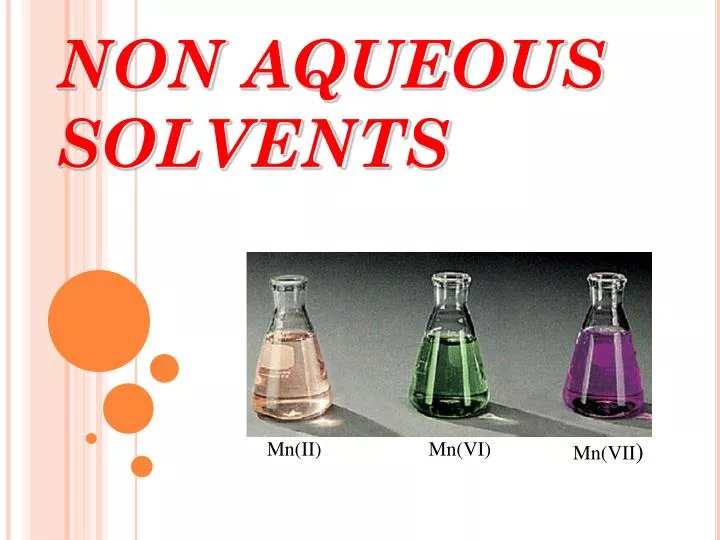
Non-Aqueous titration Theory
Water can behave as weak acid and a weak base. If we are titrating very weak acid or weak base in aqueous solution, then it is possible that it can compete with weak acid or base with regard to proton donation and acceptance.
For example –
RNH2 + H+ ⇌ RNH3+
H2O + H+ ⇌ H3O+
H 3 O + can compete with RNH 3+ . If it happens then we don’t get correct end point by titration. A general rule is that acids with
pK a >7 and bases with pK a <7 cannot be determined accurately in aqueous solution. So, for titration of weak acids or bases we
use non-aqueous solvents. Many organic solvents such as acetone, alcohol etc. can easily replace water as they compete less
actively with analyte for proton donation or acceptance. Reactions which occurred in non- aqueous titrations can be
explained by Bronsted -Lowry theory and its dentition of acids and bases.
Types of non-aqueous solvents used in non-aqueous titration
Following four types of solvents are used to dissolve analytes in non-aqueous titrations –- Aprotic solvents
- Protophilic solvents
- Portogenic solvents
- Amphiprotic solvents
Aprotic Solvents – These are chemically inert substances such as benzene, chloroform etc. these are added to ionizing
substances to depress solvolysis of the neutralization product which in result sharpen the end point. Examples – benzene,
toluene, carbon tetrachloride etc.
Protophilic Solvents – These are basic in nature and react with acids to form solvated protons. A strong Protophilic solvent
changes the weak acids to strong acids. Examples – liquid ammonia, amines, ether etc.
Protogenic Solvents – These are acidic substances and readily donate the proton. These are used to increase basicity of
weak acid. They show a levelling effect on bases. Examples- sulfuric acid, formic acid etc.
Amphiprotic Solvents – These solvents have properties of both Protophilic and Protogenic solvents. Examples – alcohol,
acetic acid etc.
Advantages of Non-aqueous Titrations
Non- aqueous titration has following advantages -
- It is useful for the titrations of very weak acids or bases.
- Many organic acids which are not soluble in water, can be dissolved in non-aqueous solvents. Thus, titration of these
- organic acid is very easy.
- It can be used for titration of mixture of acids as well.
- These titrations show sharp end point with internal indicator.
- It is simple, qualitative and selective method.
- It is a highly accurate method.
- Preferably non-aqueous titration is used for biological matters.
- It is very important in pharmacopoeial assays.
Applications of Non-aqueous Titration
Non-aqueous titration has various uses in numerous ends. Specially, in medicinal field non-aqueous titration is very useful.We have listed here few applications of non-aqueous titration -
- Non – aqueous titration is used to know the purity of assays.
- It is used for determination of concentration expressions.
- It is used in determination of hydrophobic compounds, phenobarbitone, diuretics, steroids.
- It is used in the determination of composition of anti tubercular drugs and adrenergic drugs.
Disadvantages of Non-aqueous Titration
Non – aqueous titration has following disadvantages -
- Solvents used in non-aqueous titration are not stable compared to aqueous solvents.





0 Comments
Please do not enter any spam link in the comment box